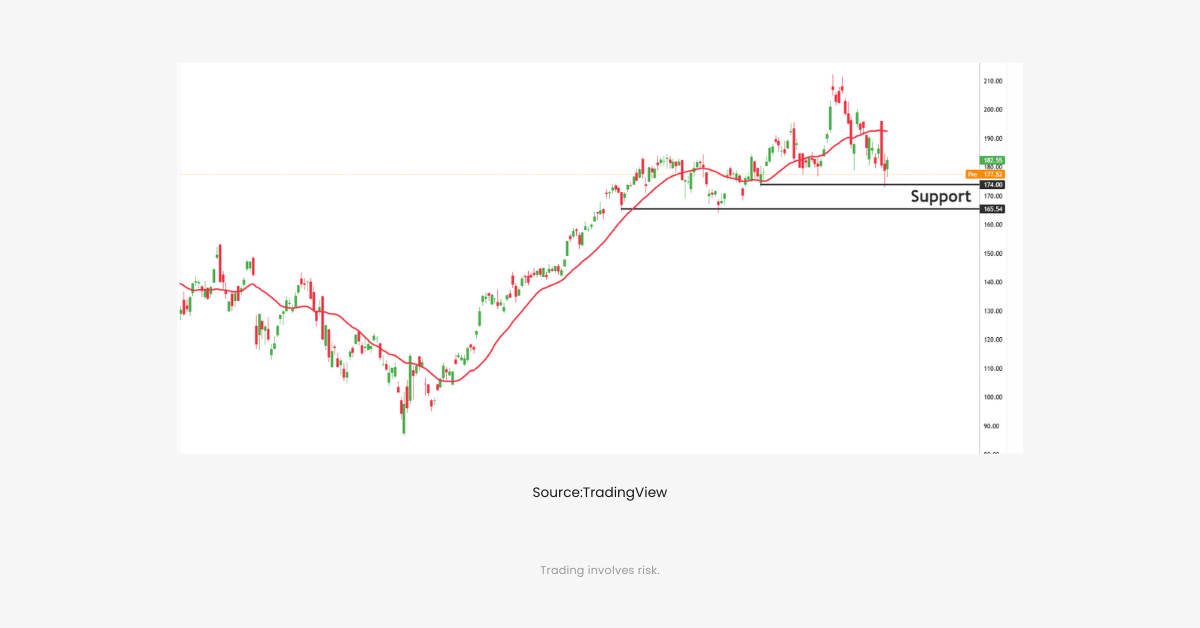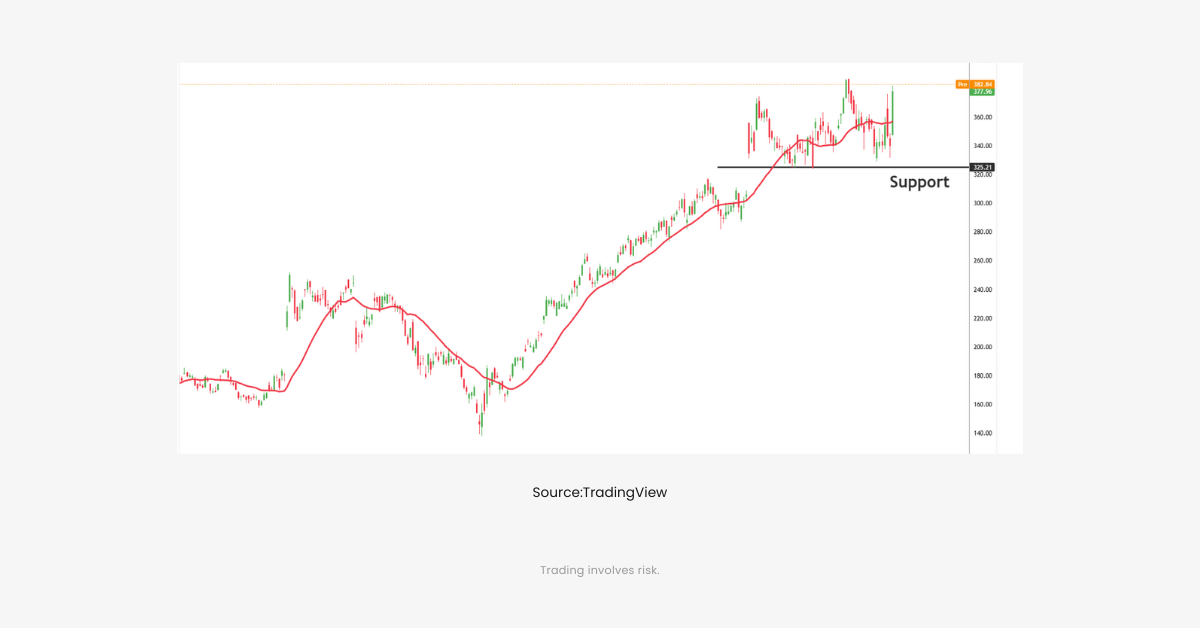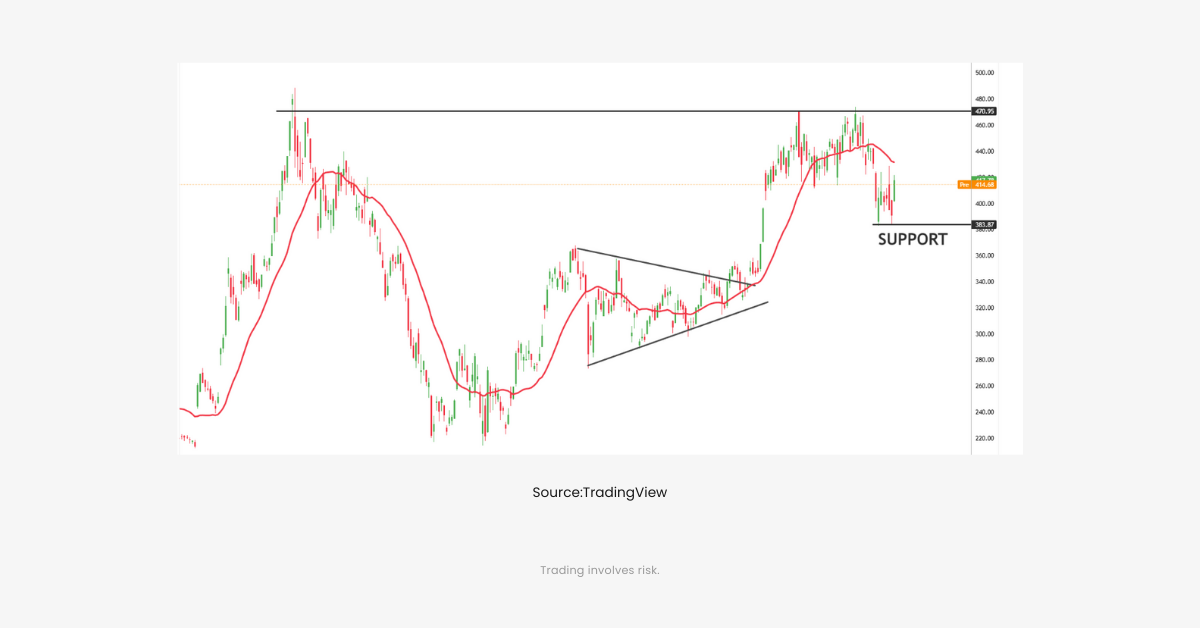
The market did not wait for Black Friday this year.
AI stocks started their own discount season early, and the timing says everything about where investor sentiment is heading.
After months of nonstop enthusiasm, traders finally hit pause. Rising uncertainty around the Federal Reserve, cooling labor data, and fading confidence in near term rate cuts all triggered a sudden reset across the market.
The result is simple. The hottest stocks of 2025 are finally pulling back, and this time the reason has nothing to do with earnings. It is all about sentiment and macro pressure.
Let’s break down what really caused the drop and why it matters for AI names going into December.
How Black Friday Season and Macro Data Pressured AI Stocks
For weeks, investors priced in aggressive Fed rate cuts.
Then the narrative flipped.
The September jobs report came in stronger than expected, pushing the market to rethink how quickly the Fed is willing to ease. Normally, stronger labor data is positive for the economy. This time it sent the wrong message for high growth tech.
AI stocks do well in low rate environments because future earnings become more valuable. When rate cut expectations cool, growth stocks lose their biggest tailwind. That exact shift played out across the tech sector as traders unwound overly optimistic bets.
Many analysts suggest that the recent dip in AI stocks isn’t tied to a breakdown in the underlying story. Instead, their view is that shifting macro conditions have temporarily pressured high-growth sectors across the board.
The Impact of Missing Economic Reports on AI Stock Volatility
We only have the September jobs report.
October data is still missing.
November data is still missing.
And the most important event of all is coming in December when the Fed announces its next interest rate decision.
That leaves investors flying half blind.
Without updated employment numbers, inflation signals, or clear communication from the Fed, traders simply cannot justify chasing AI names at recent highs. This waiting period adds tension into the market, and volatility rises naturally when conviction drops.
The AI sector became the first victim of that hesitation.
Why AI Stocks Corrected After Months of Rapid Gains
Before this pullback, major AI names rallied aggressively from July to mid October. Nvidia, AMD, Broadcom, Microsoft, and the entire AI infrastructure ecosystem were trading at elevated valuations.
Investors are not abandoning the story.
They are simply taking money off the table.
A sudden reset does not erase the AI trend. It just brings prices back to levels traders are more comfortable with until the macro picture becomes clearer.
Think of it as the market finally exhaling after holding its breath for months.
For a deeper look at why AI valuations can swing sharply during hype cycles, you can also read our earlier analysis: We Asked ChatGPT: Is the AI Boom the New Dot Com Bubble?
The Impact of Fed Uncertainty on AI Stocks
Here is the real reason behind the volatility.
Markets do not know if the first rate cut happens in:
- early 2026
- late 2025
That lack of clarity pushes investors into defensive mode. When rates stay higher for longer, high growth tech loses momentum because future profits get discounted more heavily.
The AI sector reacts to rate expectations faster than almost any other group.
So each change in sentiment hits AI stocks first and hardest.
Until the Fed gives a clearer message in December, this uncertainty will continue to influence pricing.
Charts to Watch: AI Leaders Still Hold a Bullish Structure
Despite the recent pullback, several major AI names still maintain strong bullish structures on their charts. The dip reflects sentiment and macro uncertainty rather than any break in long term trend. Here are three key stocks that highlight this clearly.
Nvidia (NVDA)

Nvidia continues to hold a strong upward structure supported by higher lows. The latest pullback simply brought the price closer to a level buyers have consistently defended.
The overall pattern remains constructive and shows no signs of trend exhaustion.
Broadcom (AVGO)

Broadcom’s chart shows that prices remain above key support areas and near previous highs. The recent price action appears to maintain the broader bullish structure, with momentum still remains strong. AVGO has shown consistent momentum driven by AI networking demand, and the current dip has not violated any structural levels.
The trend remains intact and reflects ongoing institutional interest.
Tesla (TSLA)

Tesla often moves with more volatility than other AI names, but its broader structure is still constructive. TSLA continues to form higher lows for now and has held key support zones that historically attract buyers.
These three charts confirm one thing.
The story has not changed.
The trend has not broken.
Only sentiment has cooled until we get more clarity from the upcoming economic data and the December Fed decision.
AI Stocks Fell for Macro Reasons, Not Fundamental
This is the most important takeaway and where many traders get confused.
There were no major earnings disasters, no negative AI headlines, and no slowdown in adoption or demand.
The drop is almost entirely sentiment driven.
Institutions trimmed positions.
Retail investors locked in profits.
Short term traders rotated into safer assets.
Options positioning flipped from overly bullish to neutral.
In other words, this was a mechanical reset, not a collapse in confidence.
How Black Friday Timing Added Pressure to AI Stocks
Volatility tends to rise in November as funds rebalance portfolios and prepare for end of year tax strategies. Add the Fed uncertainty and missing jobs data, and the conditions were perfect for a pullback.
Investors also dislike holding risk into long weekends or holiday periods. When sentiment is shaky, they reduce exposure.
So this early Black Friday sale did not come from weakness.
It came from caution.
The Bigger Picture for AI in Today’s Market
Recent price action hasn’t pointed to a breakdown in the wider AI narrative. It mainly demonstrates the sector’s sensitivity to macroeconomic developments. This sensitivity doesn’t weaken the theme; it reflects the influence of broader conditions on near-term market behavior.
Demand for AI chips, cloud expansion, data center upgrades, model training, automation, and enterprise adoption continues to rise. The fundamentals have not changed. Only the mood has.
Once we get:
- October jobs data
- November jobs data
- December Fed decision
The market will have more clarity to evaluate AI stocks with greater confidence.
What This AI Stocks Pullback Is Telling Us
The recent dip in AI stocks seems tied to shifting rate expectations, missing economic data, and a broader sense of uncertainty running through global markets. With sentiment cooling, prices look lower not because the AI story has fundamentally changed, but because the market is reacting to the information it has right now.
Some analysts called this move an “early Black Friday” moment. A period where caution, rather than conviction, is shaping how AI names are being priced. That comparison reflects how the sector is behaving in the short term, not a forecast of where it may head next.
As delayed data begins to return and the macro picture becomes clearer, the market will have more inputs to work with. Until then, this phase looks like a waiting period, a stretch where AI stocks are responding more to uncertainty and central bank signals than to sector-specific developments.
Risk Disclosure
Trading Securities, Futures, CFDs and other financial products involve high risks due to the rapid and unpredictable fluctuation in the value and prices of these underlying financial instruments. This unpredictability is due to the adverse and unpredictable market movements, geopolitical events, economic data releases, and other unforeseen circumstances. You may sustain substantial losses including losses exceeding your initial investment within a short period of time.
You are strongly advised to fully understand the nature and inherent risks of trading with the respective financial instrument before engaging in any transactions with us. When you engage in transactions with us, you acknowledge that you are aware of and accept these risks. You should conduct your own research and consult with an independent qualified financial advisor or professional before making any financial, trading or investment decisions. This blog may contain speculative statements regarding future expectations, plans, or projections based on information and assumptions currently available to D Prime. Although D Prime considers these assumptions reasonable, such statements involve risks, uncertainties, and factors beyond D Prime’s control, and actual outcomes may differ significantly.
Disclaimer
This information contained in this blog is for general informational purposes only and should not be considered as financial, investment, legal, tax or any other form of professional advice, recommendation, an offer, or an invitation to buy or sell any financial instruments. The content herein, including but not limited to data, analyses and market commentary, is presented based on internal records and/or publicly available information and may be subject to change or revision at anytime without notice and it does not consider any specific recipient’s investment objectives or financial situation. Past performance references are not reliable indicators of future performance.
D Prime and its affiliates make no representations or warranties about the accuracy or completeness of this information and disclaim any and all liability for any direct, indirect, incidental, consequential, or other losses or damages arising out of or in connection with the use of or reliance on any information contained in this blog. The above information should not be used or considered as the basis for any trading decisions or as an invitation to engage in any transaction.
D Prime does not guarantee the accuracy or completeness of this report and assumes no responsibility for any losses resulting from the use of this report. Do not rely on this report to replace your independent judgment. You should conduct your own research and consult with an independent qualified financial advisor or professional before making any financial, trading or investment decisions.


